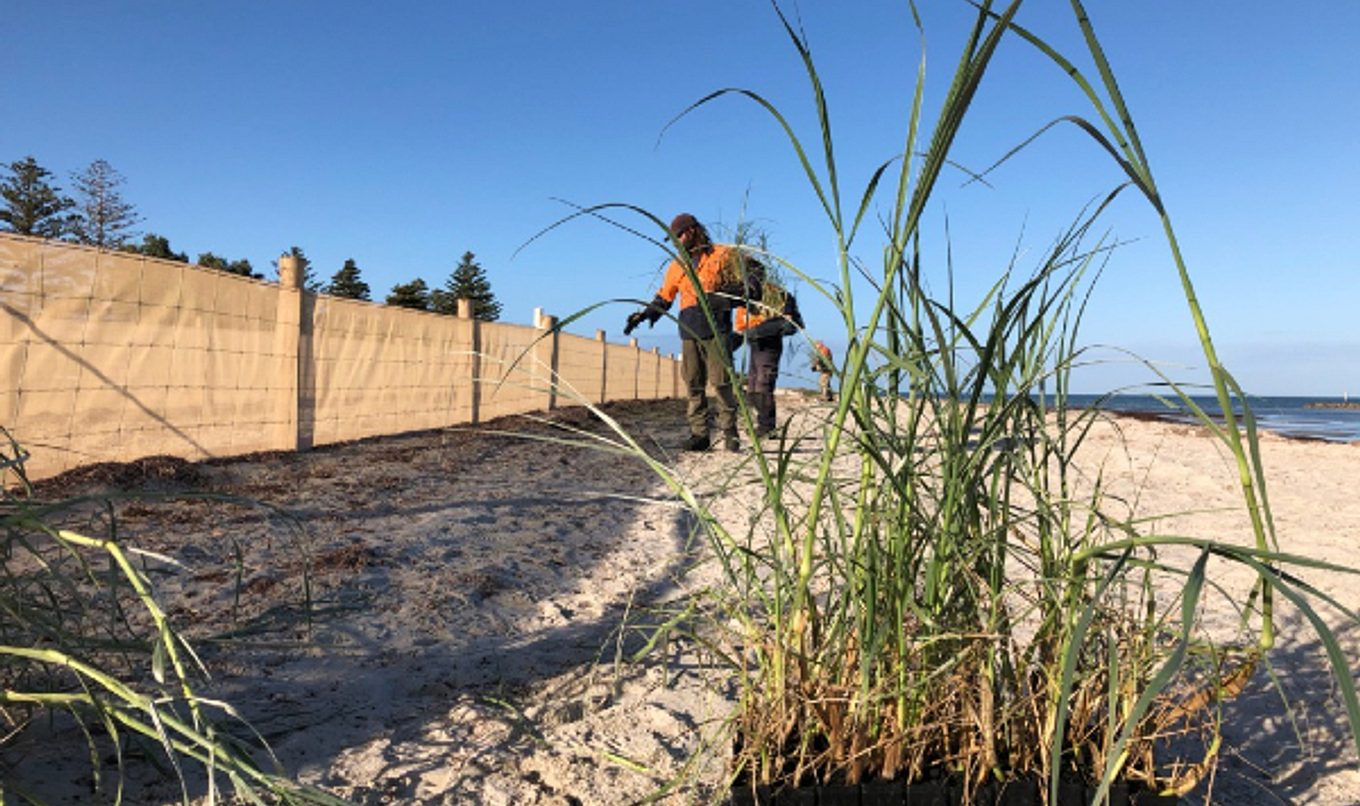Plants to stabilise rebuilt dunes
More than 8500 plants will vegetate newly restored dunes at Semaphore South as part of a project to rebuild the area, which was badly damaged during a storm in 2016.

The Department for Environment and Water has been working closely with the City of Port Adelaide Enfield and community representatives to rebuild the eroded dunes, between Hart and Arthur streets.
Sand was moved from Largs Bay earlier this year to rebuild the sand dunes, ensuring a buffer was in place to protect the foreshore and community assets before winter.
Drift net fencing has recently been installed and about 8500 plants are being placed to help stabilise the dunes. These techniques have been used with great success to re-establish dunes on Adelaide’s southern beaches, such as at Seacliff and South Brighton.
The public is asked to stay off the dunes so the sand remains stable and the plants are not damaged.
Sprinkler irrigation will help the plants establish and grow and reduce wind-blown sand. The drift fences help to trap windblown sand coming from the beach and dune face and provide a more stable environment for establishment of vegetation.
A species list and planting plan provided by independent ecologists will guide the revegetation works. The ecologists completed a comprehensive vegetation survey of the Semaphore to Largs Bay coast earlier this year.
Ongoing weed control and further planting will occur in subsequent years to increase the biodiversity and resilience of this area.
As part of the restoration works the City of Port Adelaide Enfield has installed a new fence and has reinstated the turf and irrigation to its former state.
Read FAQs about the project and subscribe for email updates at environment.sa.gov.au/coasts

